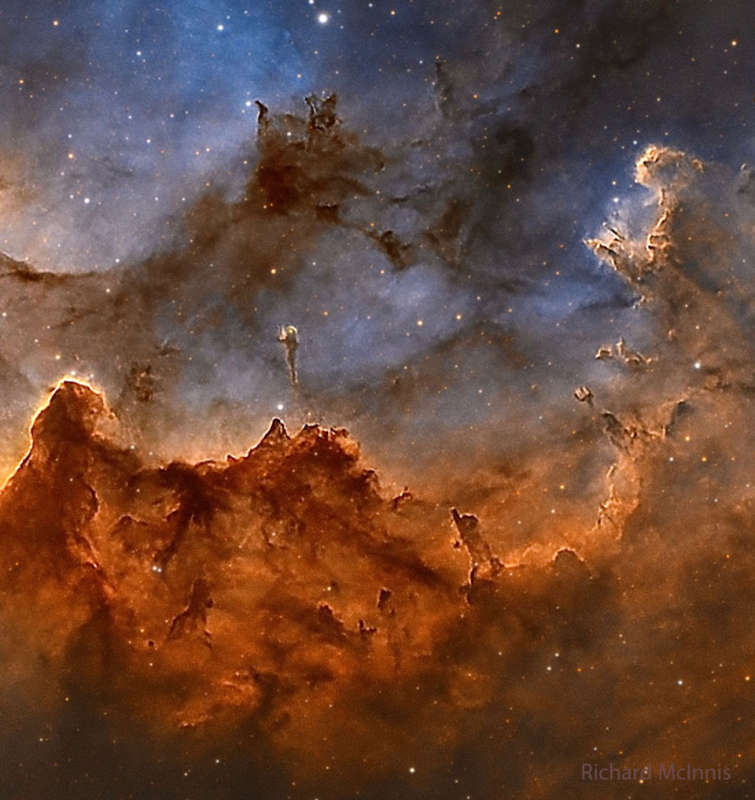
|
Credit & Copyright: Richard McInnis
Explanation:
Halloween's origin is ancient and astronomical.
Since the fifth century BC,
Halloween
has been celebrated as a
cross-quarter day, a day halfway between an
equinox (equal day / equal night) and a
solstice
(minimum day / maximum night in the northern hemisphere).
With a
modern calendar however, even though Halloween occurs today,
the real
cross-quarter day will occur
next week.
Another cross-quarter day is
Groundhog Day.
Halloween's modern celebration retains
historic roots
in
dressing to scare away the spirits of the dead.
Perhaps a fitting tribute to this ancient holiday is
this closeup view of the
Wizard Nebula (NGC 7380).
Visually, the interplay of stars, gas, and dust has created a shape that appears
to some like a
fictional
ancient sorcerer.
Although the nebula may last only a few million years, some of the
stars
being conjured from the gas by the
great gravitational powers may
outlive our Sun.
|
January February March April May June July August September October November December |
| |||||||||||||||||||||||||||||||||||||||||||||||||||||||
NASA Web Site Statements, Warnings, and Disclaimers
NASA Official: Jay Norris. Specific rights apply.
A service of: LHEA at NASA / GSFC
& Michigan Tech. U.
Based on Astronomy Picture
Of the Day
Publications with keywords: Halloween
Publications with words: Halloween
See also:
